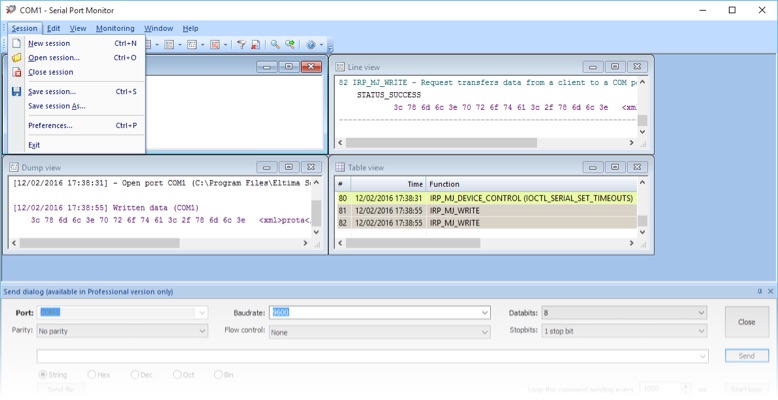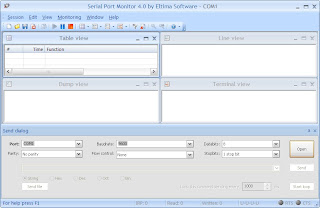
- #SERIAL PORT MONITOR SOFTWARE SERIAL#
- #SERIAL PORT MONITOR SOFTWARE UPDATE#
- #SERIAL PORT MONITOR SOFTWARE PC#
- #SERIAL PORT MONITOR SOFTWARE WINDOWS#

The below samples assume you have one or more PCs, and some external device with which it is (the are) communicating:įigure 3: PC#1 communicating to external device via COMM2, COMMSPY monitoring COMM1įigure 4: PC#1 communicating to external device via COMM1, COMMSPY, on PC#2, is monitoring COMM1 When I split the monitoring functionality (GCommMonitor) up (into Connect() and Monitor()), and rearranged the controls in-between calling those two functions, everything worked smoothly.īelow is a few diagrams which will demonstrate a few possible configurations of the “break-out” cable. When the second threads starts, it and the main thread start competing for CPU cycles, which slows down the repaint of the controls. This was because I was originally connecting to the COM port AND starting the thread, then rearranging controls. Second, the controls on the dialog were slow to repaint when monitoring started. Then I noticed that an OVERLAPPED structure must be passed to WaitForCommEvent() in order for that to work correctly. It turns out that WaitForCommEvent() will instantly return if the comm mask is changed with Since its sitting inside WaitForCommEvent(), the only way to communicate with the thread is through a comm event.

First, I had problems getting the thread to terminate. I ran into some problems while developing COMMSPY.
#SERIAL PORT MONITOR SOFTWARE SERIAL#
The serial port output window changes to full dialog mode, hiding unused controls. To start monitoring the serial port, simply select “Start!”:įigure 2: COMMSPY main window while monitoring The window on the left is the serial port output, in the middle the serial port settings, on the right the display settings, and on the bottom the command buttons. It is intentionally laid out to look like an oscilloscope.
#SERIAL PORT MONITOR SOFTWARE UPDATE#
Then update the communication settings, setting the port to either COMM1 or COMM2, whichever you hooked the third end of the cable to.
#SERIAL PORT MONITOR SOFTWARE PC#
Connect two of its ends between the two devices communicating, and the third end to either COMM1 or COMM2 of the PC on which COMMSPY is running. To use COMMSPY, you’ll need a “break-out” cable. COMMSPY will remember every one of the settings, including the position of the dialog, and restore them the next time you run it. It provides a user friendly interface, with full customization of the port and display settings only a few clicks away.
#SERIAL PORT MONITOR SOFTWARE WINDOWS#
It is a Windows GUI built around the ever popular Visual C++ SDK sample “tty.c”, and built under Visual C++ 4.2+.

COMMSPY is a dialog based, serial port monitor for Windows. That was my motivation for creating an MFC program called COMMSPY. Without buying expensive shrink wrapped software, there’s really nothing available. Attempting to monitor the serial port can be a frustrating experience.


 0 kommentar(er)
0 kommentar(er)
